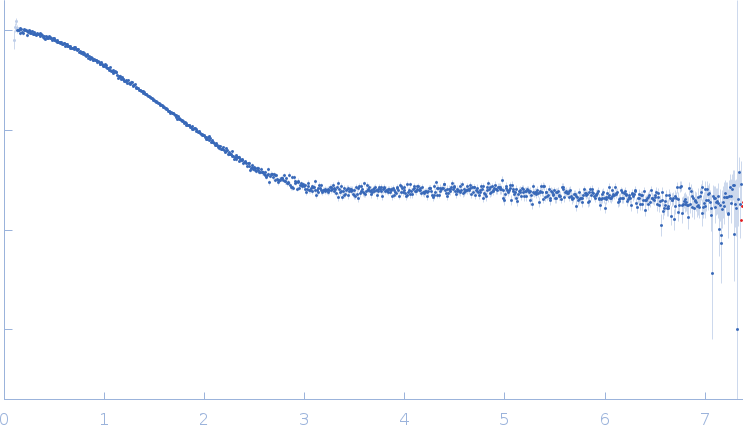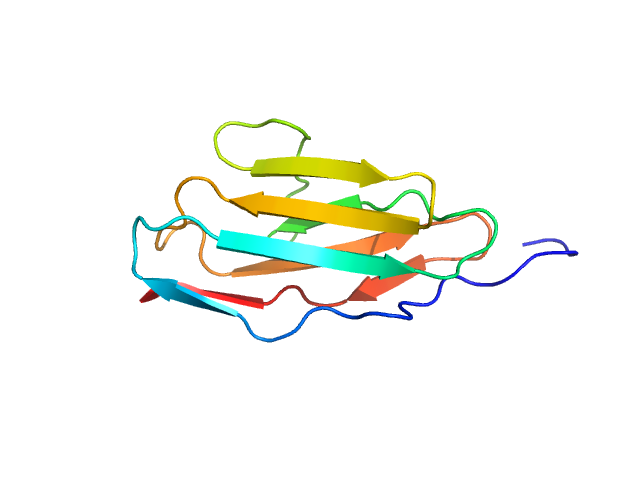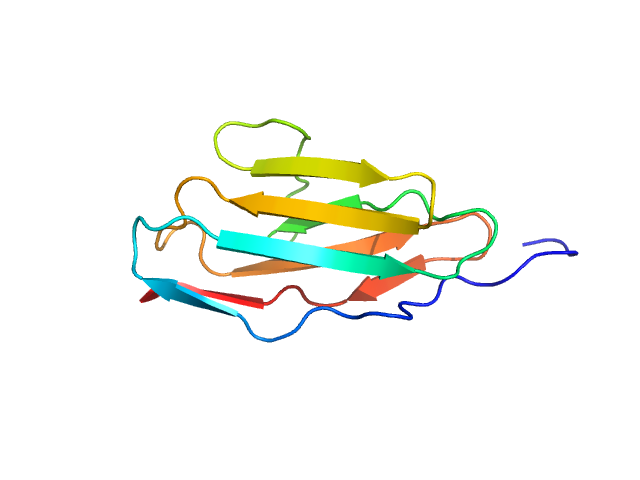|
Synchrotron SAXS data from solutions of the Ig-like C2-type 3 domain (Ig3WT) of palladin in 20 mM HEPES pH 7.4, 1 mM DTT, 100 mM NaCl were collected on the BL4-2 beam line at the Stanford Synchrotron Radiation Lightsource (SSRL; Menlo Park, CA, USA) using a Rayonix MX225-HE detector at a sample-detector distance of 1.2 m and at a wavelength of λ = 0.113 nm (I(s) vs s, where s = 4πsinθ/λ, and 2θ is the scattering angle). Solute concentrations ranging between 0.5 and 7.4 mg/ml were measured at 20°C. 12 successive 1 second frames were collected. The data were normalized to the intensity of the transmitted beam and radially averaged; the scattering of the solvent-blank was subtracted. The low angle data collected at lower concentration were merged with the highest concentration high angle data to yield the final composite scattering curve.
NOTE: Amino acid sequence discrepancies are noted between on aligning the model and the submitted amino acid sequence.
|
|
 s, nm-1
s, nm-1

